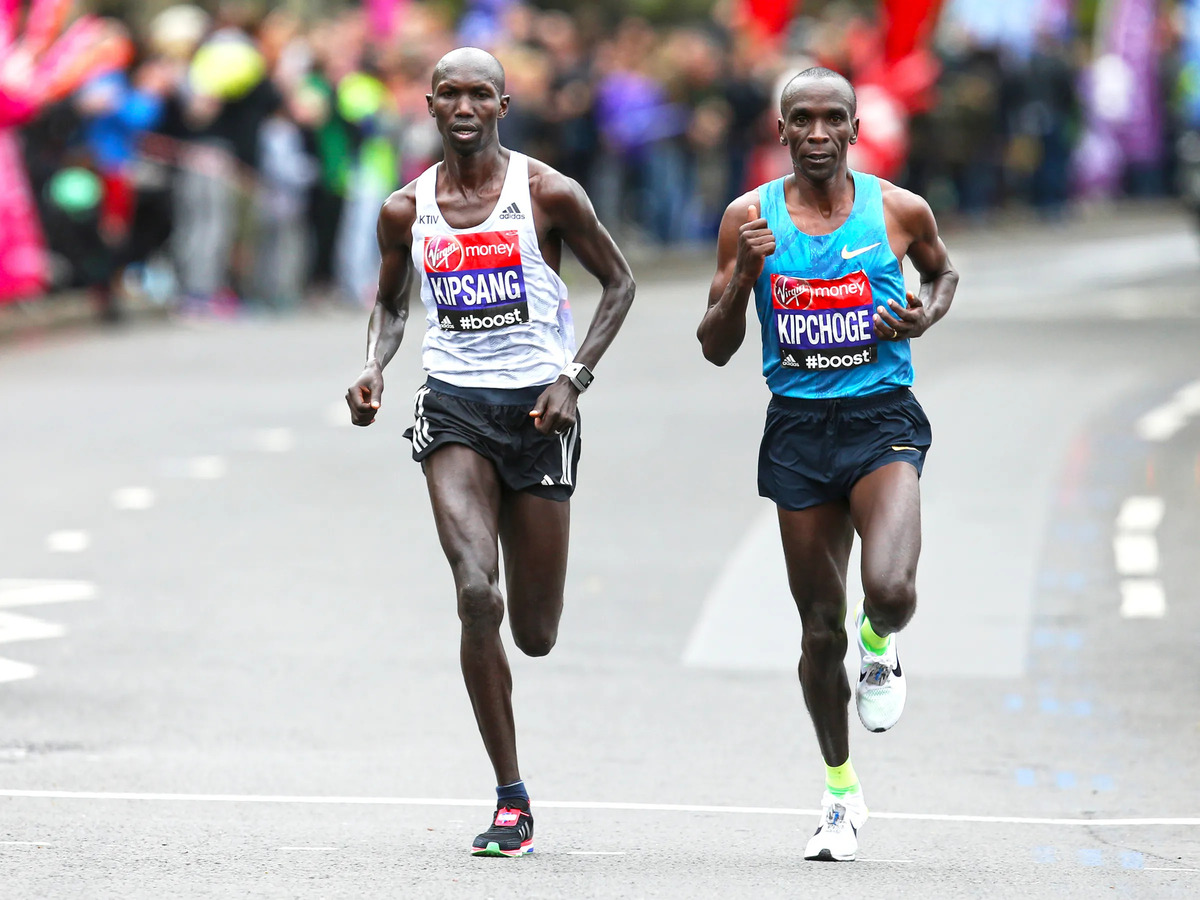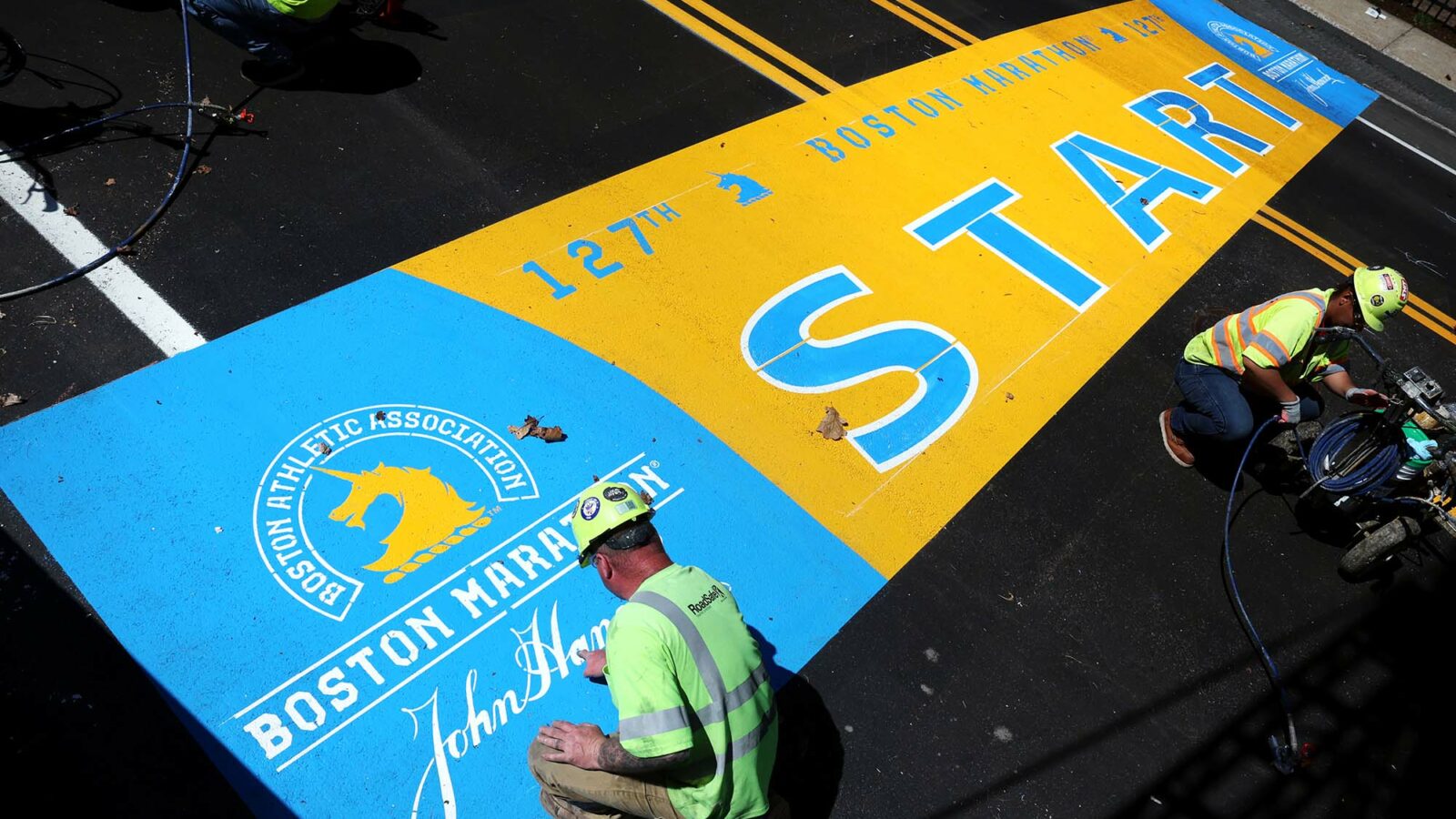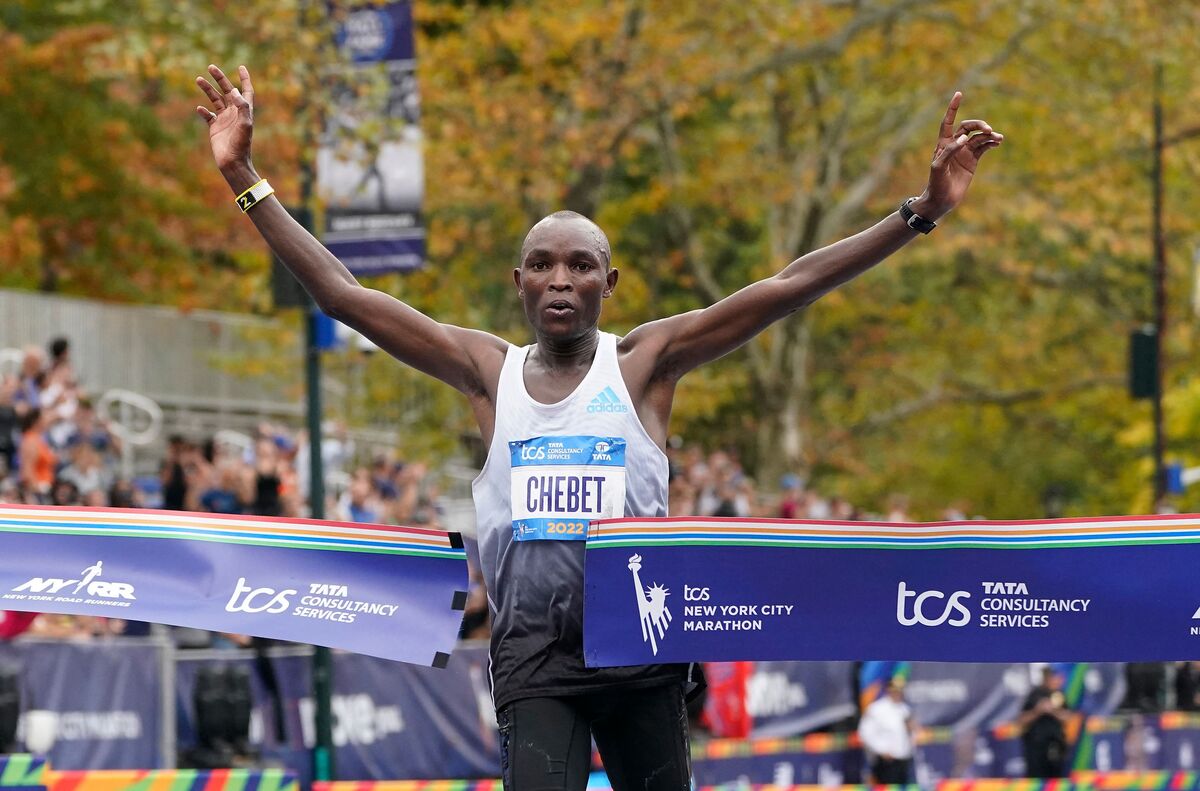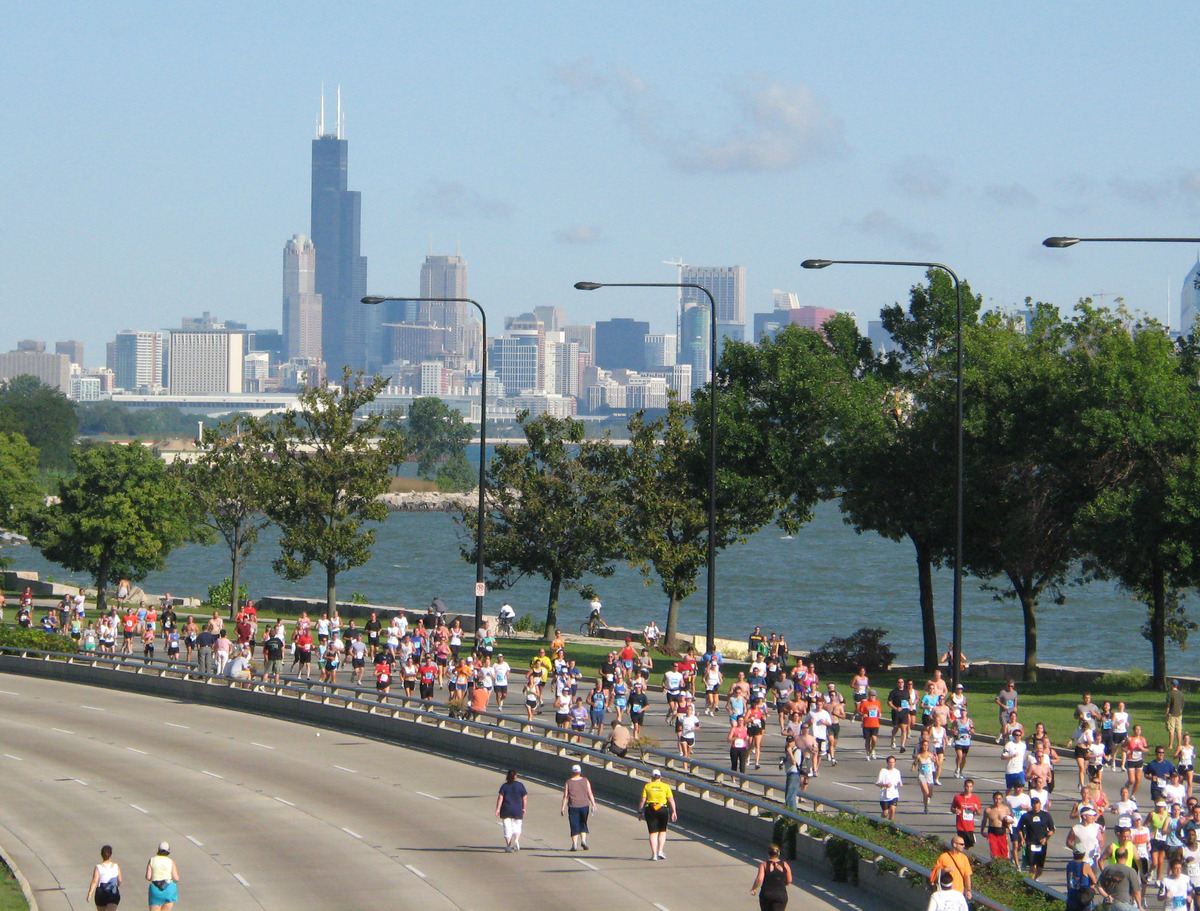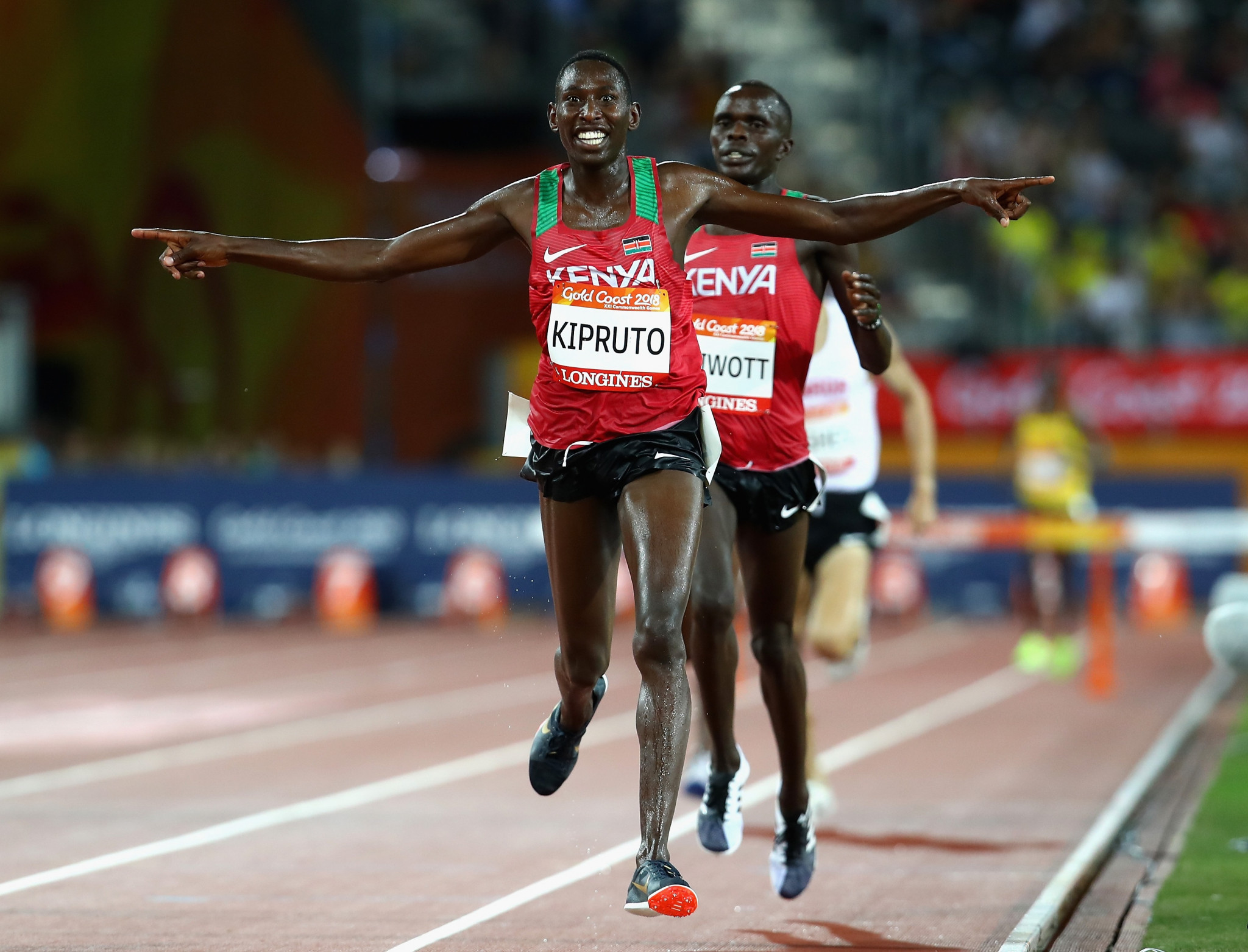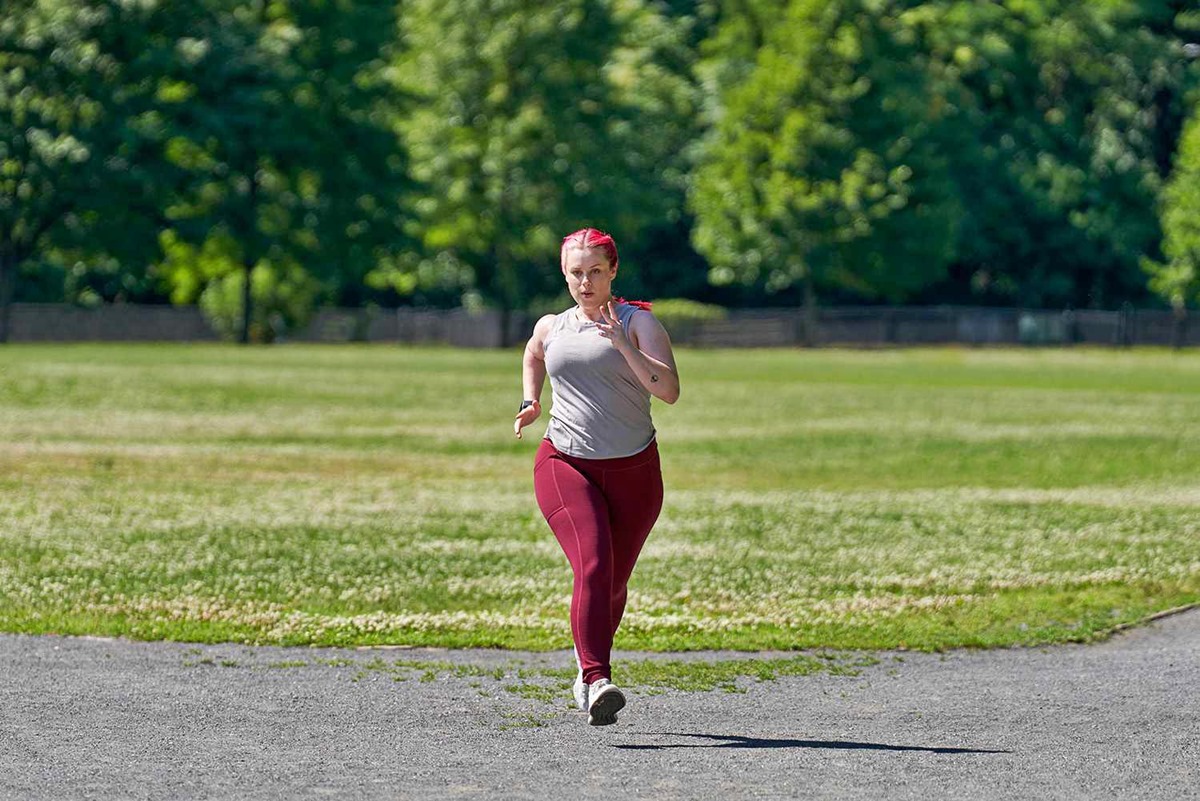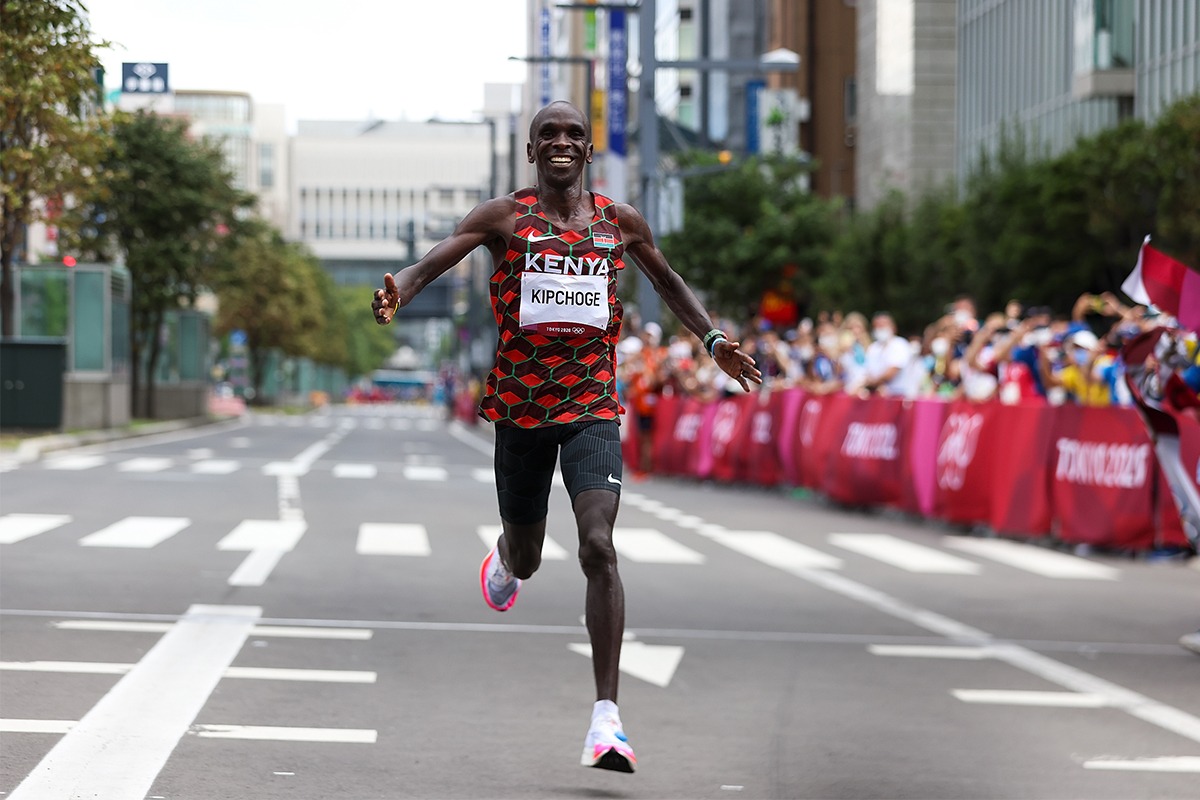

Featured
What Was Kipchoge’s Pace Per Mile
Modified: January 22, 2024
Discover the impressive pace achieved by Kipchoge per mile in this featured article. Gain insights into his record-breaking performance and be inspired by his remarkable feat.
Introduction
Eliud Kipchoge is a renowned Kenyan long-distance runner who has achieved remarkable success in the marathon discipline. In 2019, he made history by becoming the first person to run a marathon distance in under two hours, completing the “INEOS 1:59 Challenge” in Vienna, Austria. This incredible feat left the world in awe and sparked discussions about Kipchoge’s exceptional pace.
Understanding Kipchoge’s pace per mile provides valuable insights into the physical and mental strength required to achieve such a remarkable feat. It also allows us to appreciate the effort, dedication, and strategic planning that goes into marathon running at an elite level.
In this article, we will delve into the factors that influence Kipchoge’s pace, analyze his mile-by-mile breakdown, and explore the implications and significance of his performance. By gaining a deeper understanding of Kipchoge’s pace, we can celebrate not only his achievement but also the incredible world of marathon running.
Throughout the article, we will examine Kipchoge’s historic run within the context of the marathon distance, his training and preparation, and the comparison with previous marathon records. Let’s embark on this journey and uncover the remarkable details of Kipchoge’s pace per mile.
Understanding Eliud Kipchoge’s Pace
Eliud Kipchoge’s exceptional pace in marathon running is a testament to his extraordinary talent, training, and sheer determination. To comprehend his remarkable speed, it is necessary to consider several factors that contribute to his success.
Firstly, Kipchoge’s extensive experience in long-distance running plays a significant role. Over the years, he has honed his skills and developed a deep understanding of his body’s capabilities. This knowledge allows him to maintain a consistent and efficient pace throughout the course of a marathon.
Secondly, Kipchoge’s physical conditioning is of paramount importance. He devotes countless hours to endurance training, core strengthening exercises, and speed drills. This comprehensive training regimen ensures that his muscles are primed for the grueling demands of a marathon. Additionally, the Kenyan’s exceptional cardiovascular fitness enables him to sustain a fast pace for the duration of the race.
Furthermore, Kipchoge’s mental fortitude plays a crucial role in maintaining a consistent and fast pace. While it is physically demanding to run at an elite level, the mental challenges are equally significant. Kipchoge has developed a strong mindset, allowing him to overcome fatigue, push through pain barriers, and stay focused on his goal of achieving his desired pace.
In addition to individual factors, external influences such as race conditions and competition play a role in Kipchoge’s performance. Favorable weather conditions, well-designed race courses, and the presence of other elite runners can contribute to a faster pace. Kipchoge strategically chooses races where these factors align to maximize his chances of achieving a record-breaking pace.
Understanding the intricacies of Kipchoge’s pace gives us a glimpse into the world of elite marathon running. His unique combination of experience, physical conditioning, mental resilience, and strategic decision-making sets him apart as one of the greatest marathon runners of all time. As we delve into the mile-by-mile breakdown of Kipchoge’s pace, we will witness the culmination of these factors and appreciate the extraordinary achievement he has accomplished.
Factors Affecting Kipchoge’s Pace
Eliud Kipchoge’s remarkable pace in marathon running is influenced by various factors that contribute to his success. From internal factors related to his physiology and training to external factors like race conditions, each element plays a role in determining his speed.
One of the critical factors affecting Kipchoge’s pace is his exceptional running technique. His efficient running form minimizes energy expenditure and optimizes stride length and cadence. Kipchoge’s smooth and fluid style allows him to maintain a steady pace without wasting energy, resulting in faster race times.
Another crucial factor is Kipchoge’s ability to control his breathing and oxygen consumption. Proper breathing techniques, coupled with his exceptional cardiovascular fitness, enable him to efficiently supply oxygen to his muscles. This supports his sustained pace throughout the marathon, preventing early fatigue.
The training and preparation leading up to the race significantly impact Kipchoge’s pace. His rigorous training regime, which includes long runs, interval training, tempo runs, and strength exercises, enhances his endurance and speed. With each training session, Kipchoge builds the necessary physical and mental resilience required to maintain a fast pace during a marathon.
The environmental conditions during the race also have a profound impact on Kipchoge’s pace. Factors such as temperature, humidity, wind, and altitude can affect his performance. Cooler temperatures and lower humidity levels contribute to better running conditions, enabling faster times. Similarly, racing at lower altitudes reduces the effects of decreased oxygen levels, giving Kipchoge an advantage in achieving a faster pace.
Moreover, Kipchoge’s competition and the tactics employed within a race can influence his pace. The presence of other elite runners creates a competitive atmosphere, pushing Kipchoge to maintain a fast pace to stay ahead. Strategic decisions, such as surge running or picking up speed at specific points, can be employed to gain an edge over rivals. Kipchoge’s ability to adapt to different race scenarios and make tactical decisions contributes to his consistent and impressive pace.
In summary, multiple factors work in tandem to affect Kipchoge’s pace in marathon running. His running technique, breathing control, training and preparation, race conditions, and competition all contribute to his extraordinary speed. Understanding the intricacies of these factors allows us to appreciate the immense skill and preparation that goes into achieving Kipchoge’s record-breaking pace.
The Marathon Distance
The marathon distance, measuring 26.2 miles or 42.195 kilometers, is a grueling test of endurance, requiring immense physical and mental stamina. Understanding the unique challenges posed by this distance provides context for Eliud Kipchoge’s impressive pace.
The origin of the marathon dates back to ancient Greek history, when a messenger named Pheidippides is said to have run from the city of Marathon to Athens to deliver news of a military victory. According to legend, Pheidippides covered the distance and exclaimed “Nenikékamen” meaning “We have won!” before collapsing from exhaustion. This mythical story inspired the creation of the modern-day marathon, first introduced as an event in the inaugural modern Olympic Games in 1896.
Running a marathon requires a delicate balance of pacing, fueling, and mental resilience. The distance places high demands on the body, challenging the aerobic and anaerobic energy systems. Endurance training is crucial to build the necessary muscle strength, cardiovascular fitness, and ability to efficiently utilize energy stores throughout the race.
Furthermore, pacing strategy is critical in the marathon. Starting too fast can result in early fatigue and a significant drop in pace in the latter stages of the race. Conversely, starting too conservatively may lead to missed opportunities to maintain a competitive pace. Finding the optimal balance is key, ensuring the runner sets a sustainable pace that can be maintained throughout the distance.
Fueling during a marathon is also essential to sustain energy levels and prevent hitting the proverbial “wall.” Runners rely on a combination of carbohydrates, fats, and fluids to maintain energy and hydration levels. This fueling strategy depends on individual preferences and may involve consuming energy gels, sports drinks, or high-carbohydrate snacks at regular intervals during the race.
Mentally, the marathon can be a daunting challenge. The distance demands focus, mental toughness, and the ability to overcome doubts and fatigue. Runners often employ various mental strategies, such as positive self-talk, visualization, and breaking the race into smaller milestones to maintain motivation and mental resilience.
By comprehending the unique demands of the marathon distance, we can better appreciate the magnitude of Kipchoge’s achievement in maintaining an exceptional pace for the entire duration of the race. The physical and mental challenges presented by the marathon make his record-breaking performance all the more impressive.
Training and Preparation
The training and preparation leading up to a marathon play a crucial role in an athlete’s ability to maintain a consistent and fast pace. Eliud Kipchoge’s record-breaking performances are a testament to the extensive training and meticulous preparation he undergoes.
Kipchoge’s training regimen consists of a combination of long runs, speed workouts, strength training, and recovery sessions. Long runs, often exceeding the marathon distance, build endurance and mental resilience. These runs help Kipchoge acclimate to sustained effort, allowing him to maintain a fast pace for an extended period.
Speed workouts, including interval training and tempo runs, improve Kipchoge’s ability to sustain a high pace. Interval training involves alternating between bursts of intense speed and recovery periods, enhancing his aerobic capacity and lactate threshold. Tempo runs, performed at a comfortably hard pace, simulate race conditions and improve stamina.
In addition to running, Kipchoge incorporates strength training exercises to build muscle strength and power. This training helps him maintain an efficient running form and prevent injury. Core exercises, such as planks and bridges, enhance stability and balance, contributing to his overall running performance.
Recovery plays a crucial role in Kipchoge’s training regime. Adequate rest and proper nutrition ensure that his body can adapt and recover from the demands of intense training sessions. Balancing training load and recovery is essential to prevent overtraining and reduce the risk of injury.
Kipchoge’s meticulous attention to detail extends beyond physical training. He pays close attention to his diet, ensuring that he consumes a balanced mix of carbohydrates, proteins, and healthy fats to fuel his training and recovery. Hydration is also prioritized to optimize performance and prevent dehydration during races.
Furthermore, mental preparation is integral to Kipchoge’s training. He incorporates visualization techniques, mentally rehearsing race scenarios and envisioning success. Positive self-talk and focusing on the process rather than the outcome help him maintain a confident and determined mindset.
By dedicating himself to a rigorous training and preparation routine, Kipchoge sets the stage for his extraordinary pace. His meticulous approach ensures that he is physically and mentally ready to tackle the challenges of the marathon, enabling him to push the boundaries and achieve remarkable results.
Analyzing Kipchoge’s Pace Per Mile
Examining Eliud Kipchoge’s pace per mile provides valuable insights into the remarkable consistency and endurance he possesses as a marathon runner. By breaking down his pace throughout the course of a race, we can appreciate the tactical decisions and physical ability required to maintain such an exceptional speed.
During his historic sub-two-hour marathon in the INEOS 1:59 Challenge, Kipchoge maintained an astonishingly consistent pace, averaging around 4 minutes and 34 seconds per mile. This feat showcased his ability to maintain a fast rhythm, even under the immense pressure of the event.
Analyzing Kipchoge’s pace per mile reveals his strategic approach to the race. Generally, he started with a controlled and slightly conservative pace in the early miles to establish a strong foundation. This tactic ensures that he conserves energy for the more challenging parts of the race.
As the miles progress, Kipchoge gradually increases his pace, carefully gauging his effort to prevent early fatigue. However, it is in the later miles where he truly shines, displaying remarkable mental resilience and physical prowess. In these crucial stages, Kipchoge often accelerates, picking up the pace to maintain momentum and potentially create a gap between himself and his competitors.
What is astonishing about Kipchoge’s pace per mile is how consistent it remains, despite the increasing physical demands of the race. Whether it’s mile 1 or mile 26, he maintains a nearly uniform speed, a testament to his unparalleled training and stamina.
Another noteworthy aspect of Kipchoge’s pace per mile is his ability to handle surges and recover quickly. In some races, his competitors may attempt to break his rhythm with sudden bursts of speed. However, Kipchoge demonstrates remarkable composure by not only matching these surges but also maintaining his overall pace. This ability to adapt to changing race dynamics showcases his strategic intelligence and mental toughness.
By studying Kipchoge’s pace per mile, we gain a deeper appreciation for his remarkable achievements in marathon running. His ability to maintain an exceptional speed, respond to race dynamics, and demonstrate incredible endurance is unparalleled. Analyzing his pace per mile truly highlights the extraordinary talent and dedication of this legendary runner.
Mile-by-Mile Breakdown of Kipchoge’s Pace
Examining Eliud Kipchoge’s mile-by-mile breakdown of pace provides a fascinating insight into his race strategy, endurance, and mental resilience. By analyzing how he navigates each mile of a marathon, we can understand the fluctuations in his speed and the challenges he faces along the way.
In the early miles of a race, Kipchoge typically starts with a conservative pace, getting into his rhythm and conserving energy. While specific times may vary depending on race conditions, he generally aims for a steady and controlled pace, covering the first few miles with impressive consistency.
As the race progresses, Kipchoge begins to find his stride and gradually picks up the pace. Around the mid-section of the race, he often maintains a consistent speed, displaying his incredible ability to sustain a fast pace for an extended period.
However, the later miles of the marathon truly showcase Kipchoge’s mental and physical strength. During this phase, fatigue sets in, and most runners experience a drop in pace. Yet, Kipchoge finds a way to accelerate and maintain his speed, defying the exhaustion that typically plagues runners in the late stages of a race.
The final miles, known as the “kick” or “finishing sprint,” are where Kipchoge’s exceptional performance truly shines. Instead of succumbing to exhaustion, he digs deep and unleashes a burst of energy. These final miles often see him running at an astonishingly fast pace, leaving his competitors trailing far behind.
While Kipchoge’s mile-by-mile breakdown may show slight variations in pace, what stands out is his ability to maintain remarkable consistency overall. These minor fluctuations can be attributed to factors such as changes in terrain, weather conditions, or race dynamics. However, his ability to remain close to his desired pace, even in the face of such challenges, highlights his exceptional talent and discipline.
Moreover, Kipchoge’s mile-by-mile breakdown reveals his strategic intelligence. He gauges his effort and energy expenditure, saving enough for the crucial moments of the race. This tactical approach allows him to pick up the pace when it matters most, creating a significant advantage over his competitors.
By examining Kipchoge’s mile-by-mile breakdown of pace, we gain a deeper appreciation for his extraordinary athletic abilities. His ability to maintain consistency, handle the challenges of each mile, and finish with incredible speed sets him apart as one of the finest marathon runners in history.
Implications and Significance
Eliud Kipchoge’s remarkable pace per mile in marathon running holds profound implications and signifies the extraordinary achievements of human potential and athleticism. His performances have sparked inspiration globally and set new standards for the sport.
First and foremost, Kipchoge’s pace per mile showcases the remarkable limits of human endurance and speed. By running at an average pace of around 4 minutes and 34 seconds per mile, he challenges the notion of what is physically possible. Kipchoge’s performances redefine the boundaries of human potential, motivating athletes and enthusiasts alike to push themselves beyond their perceived limitations.
Kipchoge’s pace also brings attention to the artistry and skill of marathon running. His ability to maintain consistency, adjust to race dynamics, and unleash a finishing sprint demonstrates the strategic intelligence and mental resilience required to excel in the sport. His performances highlight the importance of training, conditioning, and meticulous preparation in achieving peak athletic performance.
The significance of Kipchoge’s pace per mile extends beyond the realm of athletics. His achievements inspire individuals from all walks of life to strive for excellence, embrace determination, and overcome obstacles. Kipchoge serves as a role model, showcasing the power of discipline, hard work, and unwavering belief in one’s abilities.
Furthermore, Kipchoge’s pace per mile sets new benchmarks for future generations of runners and challenges them to surpass his achievements. His performances act as a catalyst for innovation and progress in training techniques, nutrition, gear, and race strategies. As athletes aspire to match and exceed Kipchoge’s pace, the sport of marathon running continues to evolve and achieve new heights.
Moreover, Kipchoge’s pace per mile has significant implications for the future of marathon records. His performances have shattered previous records and continue to redefine what is considered possible. As other elite runners strive to break Kipchoge’s records, the boundaries of human accomplishment in marathon running are continually pushed further, inspiring dynamic competition within the sport.
Ultimately, Kipchoge’s pace per mile signifies the human spirit’s boundless capacity to achieve greatness. His performances act as a reminder that with meticulous preparation, unwavering determination, and unparalleled perseverance, extraordinary feats can be accomplished. Kipchoge’s accomplishments continue to resonate with individuals worldwide, inspiring them to dream big, work hard, and go beyond their perceived limitations in all areas of life.
Comparison with Previous Marathon Records
Eliud Kipchoge’s incredible pace per mile in marathon running surpasses previous records and solidifies his place as one of the greatest marathon runners of all time. Comparing his performances with previous records offers insights into the progression of the sport and highlights the magnitude of his achievements.
One of the most notable comparisons is Kipchoge’s record-breaking sub-two-hour marathon, achieved during the INEOS 1:59 Challenge. This groundbreaking feat shattered the previous fastest marathon time, which was set by Kipchoge himself in 2018 at the Berlin Marathon, where he finished in a remarkable 2 hours, 1 minute, and 39 seconds.
Comparing Kipchoge’s pace per mile with previous records reveals the significant advancements in marathon running. From the early days of the sport to breaking the two-hour barrier, marathon records have progressively improved over time. Kipchoge’s performances have pushed the limits of what was once considered possible, inspiring runners worldwide to aim higher and redefine their own boundaries.
Furthermore, Kipchoge’s pace per mile establishes new standards for elite marathon runners. Previous record holders such as Dennis Kimetto, Wilson Kipsang, and Haile Gebrselassie were renowned for their exceptional times, but Kipchoge’s pace sets a new benchmark in terms of consistency and overall speed. His records serve as a target for future generations of marathon runners, motivating them to strive for even faster times.
Kipchoge’s comparison with previous marathon records also demonstrates the progression of training methods and the continued pursuit of perfection within the sport. As athletes study Kipchoge’s performances, there is a renewed focus on refining and enhancing training techniques, nutrition, recovery strategies, and race tactics to match his incredible pace.
It is important to note that comparing marathon records is not solely about breaking previous times. Instead, it represents the ongoing legacy of the sport, where athletes build on the accomplishments of those before them. Each record holder contributes to the collective pursuit of excellence, pushing the boundaries of what is possible in marathon running.
Ultimately, Kipchoge’s comparison with previous marathon records showcases his extraordinary talent, skill, and dedication to the sport. His performances redefine the standards of marathon running and inspire runners around the world to strive for greatness. As athletes strive to surpass Kipchoge’s records, the sport continues to evolve, creating an exciting and dynamic landscape for future marathon runners.
Conclusion
Eliud Kipchoge’s remarkable pace per mile in marathon running embodies the pinnacle of human performance, determination, and skill. His ability to maintain an incredible speed throughout the entire race is a testament to his unwavering dedication, meticulous preparation, and extraordinary talent.
Understanding Kipchoge’s pace per mile reveals the blend of physical and mental factors that contribute to his success. From his efficient running technique to his ability to control breathing and oxygen consumption, Kipchoge’s mastery of the sport is evident. His rigorous training regimen, strategic race tactics, and exceptional mental resilience have propelled him into the realm of legends.
Analyzing Kipchoge’s mile-by-mile breakdown showcases his meticulous approach to pacing, tactical decision-making, and ability to unleash a finishing sprint. This extraordinary level of consistency and calculated speed sets him apart from his competitors and redefines what is considered achievable in marathon running.
Furthermore, comparing Kipchoge’s performances with previous marathon records illustrates the evolution of the sport and highlights the incredible progress made in pushing the boundaries of human potential. His achievements inspire generations of runners to strive for excellence, igniting a sense of possibility and the courage to surpass their perceived limitations.
The implications and significance of Kipchoge’s pace per mile extend beyond the world of athletics. They serve as a powerful reminder of the boundless capacity of the human spirit and the heights that can be reached through hard work, discipline, and unwavering belief in one’s abilities.
Eliud Kipchoge’s remarkable pace per mile leaves an indelible mark on the sport of marathon running. His performances inspire us to dream big, push our limits, and chase after our own personal bests, both on and off the racecourse. As we celebrate Kipchoge’s incredible achievements, we look forward to witnessing the continued advancements and records that will shape the future of marathon running.
